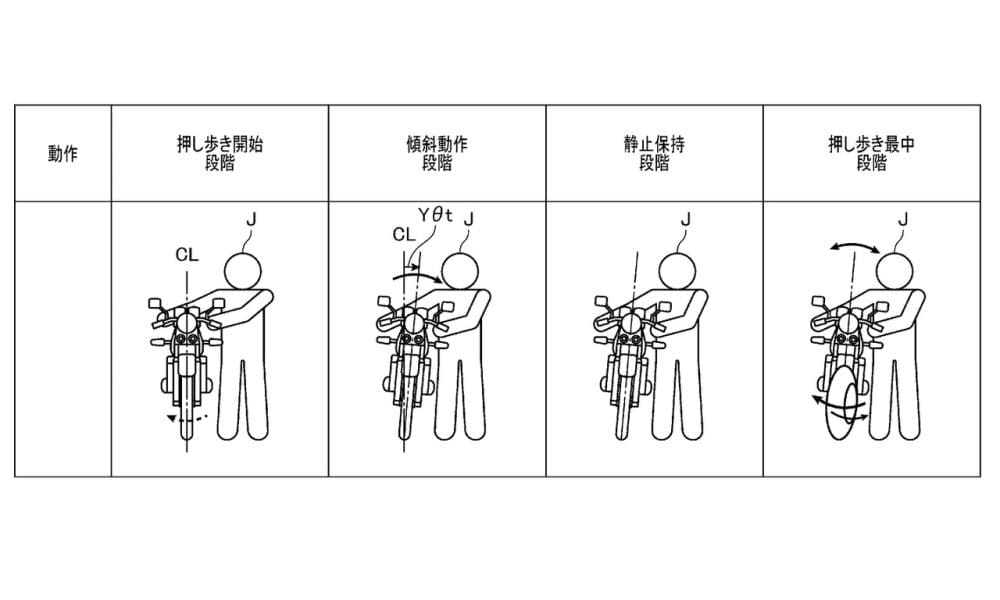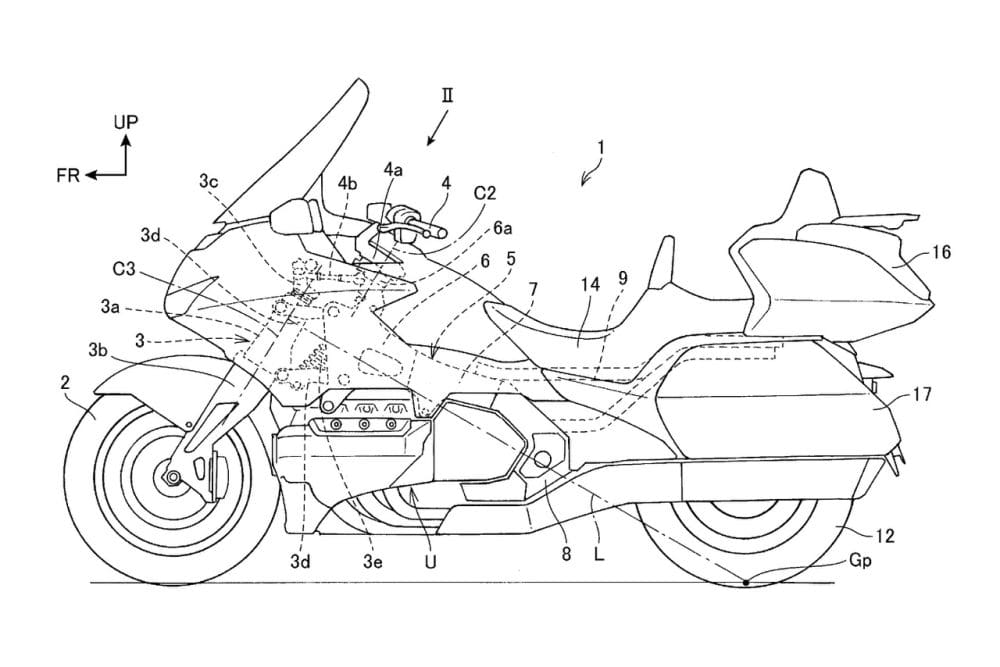Honda has filed a wide range of patent applications related to a next-generation Gold Wing over the last couple of years with a particular focus on rider-assist systems intended to make it harder to crash. The latest application shows that the future Gold Wing won’t only help while you’re riding, but also when you’re pushing it around.

The system seen in the new patent document is based on a setup that’s already been subject of several other patents, namely a steering-assist system for the Gold Wing. The same mechanical components – an electric steering servo that sits alongside the headstock and can act as both power-assistance and as an accident prevention system when combined with a variety of sensors – are carried over, but with new electronics that add the ability to assist while you’re pushing the bike around at walking pace.
The entire system is related to the Honda Riding Assist and Riding Assist-E concept bikes revealed six years ago, which were able to balance themselves – even when stationary – by simply turning the front wheel to shift the centre of gravity. Essentially, they replicated the movements that a trials rider might make while trying to avoid putting a foot down. The version being patented now, which is specifically designed with the Gold Wing’s girder-style front suspension in mind, doesn’t try to be quite that ambitious, but uses the combination of a steering servo and sensors measuring the bike’s lean angle to make it easier to push around. It’s likely to be combined with an electric low-speed manoeuvring system that can power the bike backwards or forwards, taking the effort out of pushing such a heavy bike.

The low-speed stability system is actually quite simple. It ensures the bike leans slightly towards the rider – who’s standing to one side and pushing it by the bars – but stops it from getting out of control. We all know that pushing a bike around is pretty easy while it’s at the right angle, but if it starts to lean too much towards you it can start to feel much heavier very quickly. Get it wrong and allow the bike to lean away from you while standing on one side and it can be even harder to stop it from toppling.
The system shown in Honda’s patent application quite simply turns the steering left or right as needed to keep the bike at just the right angle to make it easy to push around, never letting it adopt too much lean or allowing it to tilt away from you.

While riding, the same steering servo has been shown in other patents to act as both a steering damper and a power steering system, removing effort while keeping you in control, and it can also be used to intervene in emergencies, combined with sensors such as radars and cameras – also appearing in several Gold Wing patents over the last couple of years – to steer around obstacles or work with adaptive cruise control as a lane-assist system.
A question still hangs over when we’ll see this technology in production, but since rival brands are currently getting an edge over Honda in terms of technology, particularly when it comes to rider-assist systems with radar or camera sensors, it won’t be too long before Honda hits back with a tour-de-force of tech.
Ben Purvis











